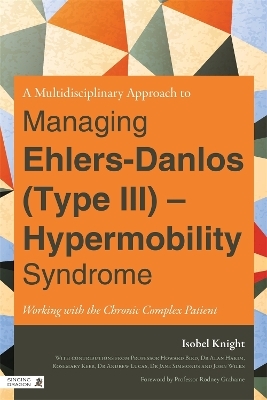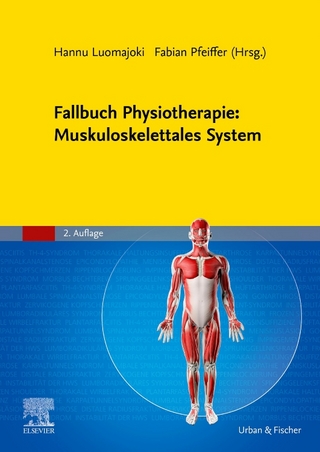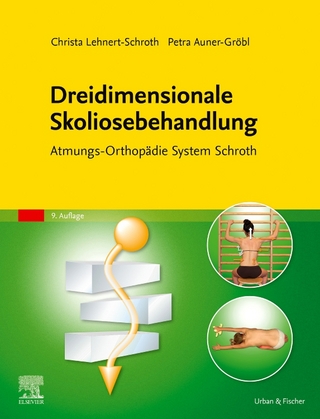
A Multidisciplinary Approach to Managing Ehlers-Danlos (Type III) - Hypermobility Syndrome
Singing Dragon (Verlag)
978-1-84819-080-1 (ISBN)
The complex effects of Ehlers-Danlos Syndrome (Type 3, Hypermobility), or EDSIII, on a patient's physical and mental wellbeing are extremely challenging for everyone involved, requiring a multidisciplinary care team and enormous dedication from the patient.
This book presents an overview of what it means to be a chronic complex patient, examining the wide range of physiological and psychological implications associated with EDSIII and other conditions such as endometriosis and fibromyalgia. It explores the exercise and rehabilitation work involved in managing the condition effectively, considering a diverse range of medical treatments and complementary approaches including physiotherapy, Bowen Technique and Feldenkrais Method(R). There are contributions and insights throughout from experts in the fields of physiotherapy, rheumatology and health psychology, all of whom have extensive experience of working with complex chronic patients. The author links her own symptoms and experiences to those of other EDSIII patients and discusses how she has been able to reach a point where she can successfully manage the condition.
This book will be essential reading for professionals working with EDSIII and other complex conditions including medical professionals, physiotherapists, occupational therapists, psychologists, counsellors and complementary therapists, and will be of interest to patients with EDSIII wanting to learn more about effective management of the condition.
Isobel Knight is a writer, researcher and periodic lecturer on Ehlers-Danlos (Type III) Hypermobility Syndrome. Isobel is also a practising Bowen Therapist and lives in South London.
Acknowledgements. Preface. Introduction. Part I. The Body and the Self. 1. The Body and the Self in Illness and Health and Autoethnographical Writing. 2. Isobel's Story. 3. Visit to Consultant Rheumatologist, Professor Howard Bird. 4. Implications of Diagnosis. Part II. Physiology. 5. Maslow Hierarchy of Needs and Homeostasis. 6. Postural Orthostatic Tachycardia Syndrome (POTS) and Autonomic Nervous System (ANS). 7. Digestion and Bowel. 8. Bladder. 9. Surgical and Nursing Implications for the EDSIII/Chronic Complex Patient. 10. Hormonal Aspects of Hypermobility and Living with Endometriosis. 11. Sleep and Fatigue. 12. Fatigue and Unexpected Responses to Treatment and Incidents. 13. Crisis, Flare-ups and Management. 14. The Chronic Complex Patient and Pain Management. Part III. Psychology. Psychology Preface. 15. How Patients Present Themselves – Isobel's Experience as a Bowen Therapist and Rosemary Keer's Experience as a Physiotherapist. 16. The Physiotherapist and Patient Relationship. 17. Goal-setting and Patient Review. 18. Trust (and Economics). 19. The Challenging Patient. 20. The Doctor/Patient Relationship and Treatment of Chronic Complex Patients. 21. Learning Styles and Learning 'Difficulties'. 22. Social Media, Forums and Support Groups. 23. Self Harm, Anxiety and Depression. 24. Cognitive Analytical Therapy (CAT). 25. Managing Chronic Complex Patients with Psychological Issues – Isobel's Personal Reflection. 26. Terminating Client Relationships. 27. I'm Not Mad; I have EDS so Why do I Need to see a Psychologist? Dr Andrew Lucas' Account of Treating EDS Patients at the Royal National Orthopaedic Hospital. Part IV. Exercise and Rehabilitation. 28. Exercise and Rehabilitation – EDS Patient Experience of Physiotherapy and Isobel's 'Stages' of Treatment. 29. Imaging Exercises and 'Less is More'. 30. Pilates and 'Physiolattes' – Core Stability and Lumbar Spine. 31. Movement Patterns; Overuse and Muscle Stiffness. 32. Neurology and Movement Disorders. 33. Subjective Outcomes. 34. Returning to Normal Life. 35. Speech, Swallowing, TMJ and Eye Problems. 36. Cervical Spine. 37. The Trauma of Birth and Post Traumatic Stress Disorder. 38. Bowen Technique and Working on Fascia and Connective Tissue Disorders. 39. Feldenkrais Method®. 40. Cardiovascular and Endurance Work. 41. Isobel 'Now' and Thoracic Spine. 42. Conclusion. Appendix 1. Sample Forms. Appendix 2. Useful Contacts. Appendix 3. Diagnostic Criteria. Bibliography. Index.
| Erscheint lt. Verlag | 28.3.2013 |
|---|---|
| Vorwort | Rodney Grahame |
| Verlagsort | London |
| Sprache | englisch |
| Maße | 152 x 228 mm |
| Gewicht | 520 g |
| Themenwelt | Sachbuch/Ratgeber ► Gesundheit / Leben / Psychologie |
| Medizin / Pharmazie ► Medizinische Fachgebiete ► Orthopädie | |
| Medizin / Pharmazie ► Physiotherapie / Ergotherapie | |
| ISBN-10 | 1-84819-080-8 / 1848190808 |
| ISBN-13 | 978-1-84819-080-1 / 9781848190801 |
| Zustand | Neuware |
| Haben Sie eine Frage zum Produkt? |
aus dem Bereich


